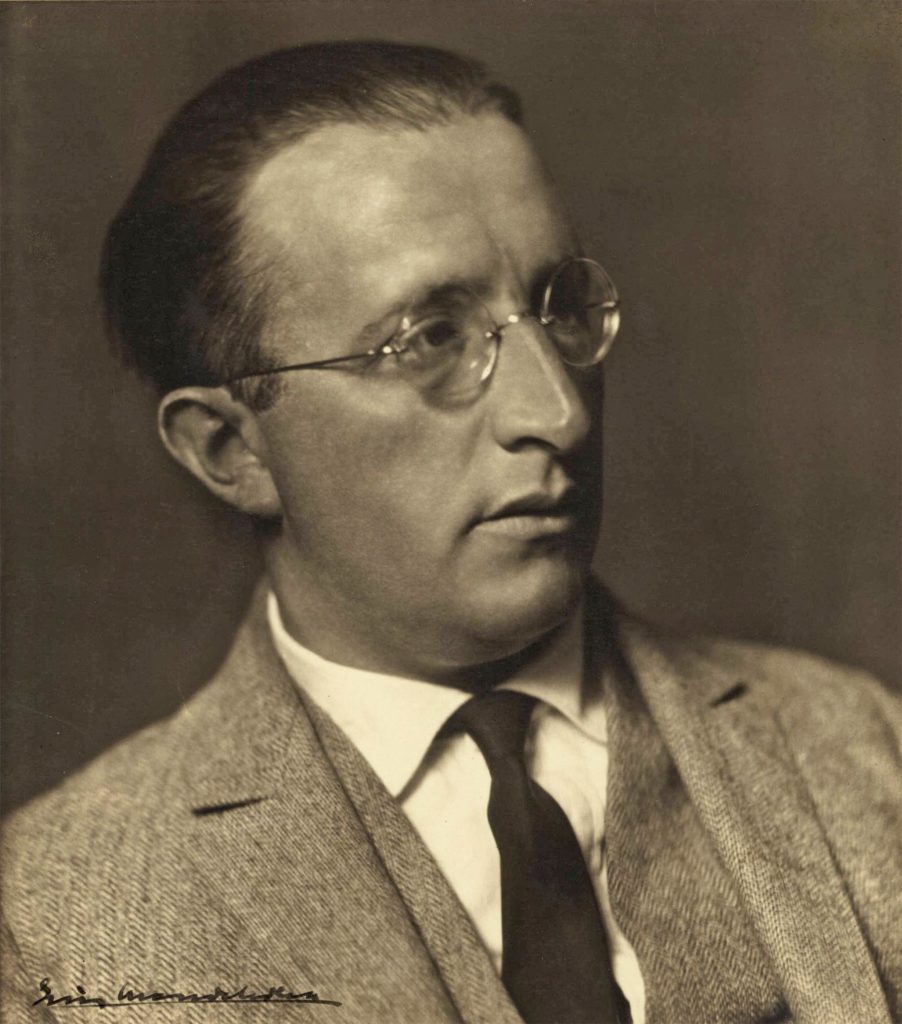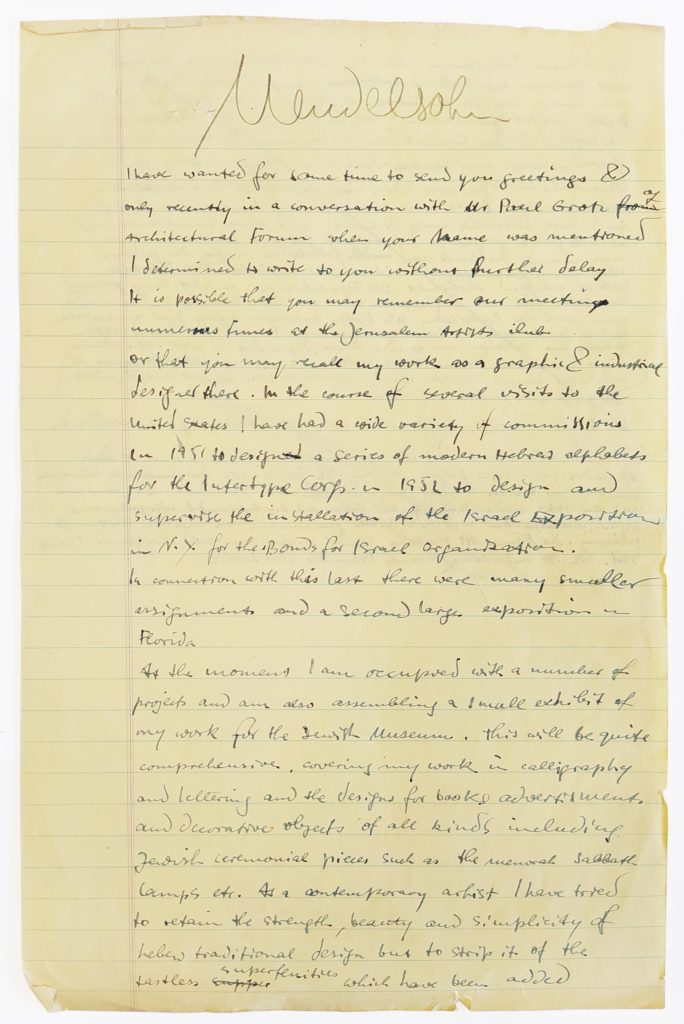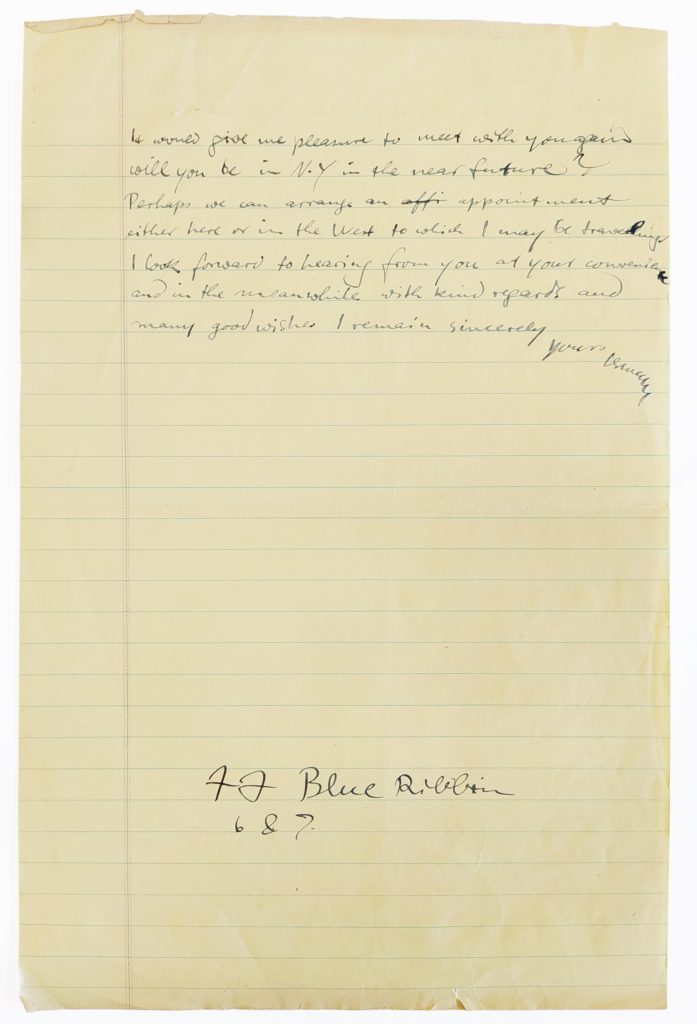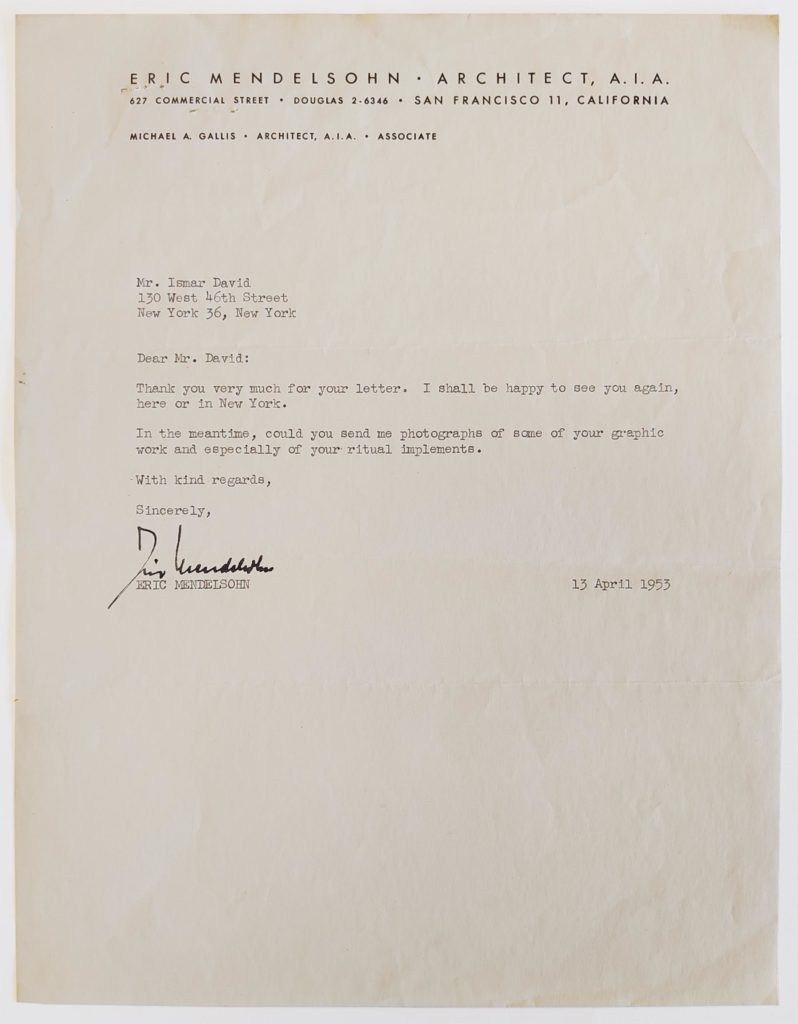Erich, later Eric, Mendelsohn, 1887–1953, architect. His spectacular Ufa Universum-Theater building opened in November 1928, the year Ismar David arrived in Berlin. Part of a larger complex of housing, shops and a cabaret on Kurfürstendamm in Charlottenburg, the Universum was one of a series of high profile buildings that made Mendelsohn one of the best known architects in Germany—and Europe—at the time.

Born in Allenstein (now Olsztyn,Poland), Eric Mendelsohn was the son of a milliner and the owner of a souvenir shop. His parents had not wanted him to study architecture, but after two semesters of economics at the University of Munich, he was able to persuade them to let him change course. He attended the Technische Hochschule Charlottenburg for two years, then returned to Munich to finish his degree at the Technische Hochschule there in 1912. After military service during the First World War, he settled in Berlin. His first and perhaps most famous building, the unorthodox, expressionistic Einsteinturm launched his career. Melding the emotion of expressionism and prevailing utilitarian concepts, Mendelsohn designed dynamic large-scale works, including the Friedrich Steinberg, Herrmann & Co. Hat Factory in Luckenwald; Schocken department stores in Stuttgart and Chemnitz, as well as private residences, like his own at Rupenhorn 6. In 1933, as the political situation in Germany became untenable, Mendelsohn left the country for Holland and then England. At the same time he began a partnership with Serge Chermayeff in London, he opened an office in Jerusalem and divided his time between the two cities. His first commission in Jerusalem was a house for Chaim Weizmann. He reunited with old friends, designing a villa and a library for one of them, Zalman Schocken, and tackled public work projects like the Hadassah Hospital and a plan for Hebrew University. In 1939, the Mendelsohns moved to Jerusalem full time, but in 1941, with the German Army approaching in Egypt and disillusioned professionally by various circumstances in Palestine, the couple migrated to the United States. At the end of the war, they settled in San Francisco. In addition to lecturing and teaching, Mendelsohn brought his bold fusion of art, spirituality and function to four American synagogues.
In 1921, Mendelsohn had lost his left eye to cancer. In mid November 1953, he succumbed to a recurrence of the disease. A memorial to the six million victims of the Holocaust, which would have been built in Riverside Park in New York City, remained unfinished at his death. Only few months earlier, Ismar David had written to him. They had been acquaintances at the Jerusalem Artists Club.

I have wanted for some time to send you greetings & only recently in a conversation with Mr. Paul Grotz of Architectural Forum when you name was mentioned I determined to write to you without further delay. It is possible that you may remember our meeting numerous times at the Jerusalem Artists Club or that you may recall my work as a graphic & industrial designer there. In the course of several visits to the United States I have had a wide variety of commissions. In 1951 to design a series of modern Hebrew alphabets for the Intertype Corp. in 1952 to design and supervise the installation of the Israel Exposition in N.Y. for the Bonds for Israel Organization. In connection with this last there were many smaller assignments and a second large exposition in Florida.
At the moment I am occupied with a number of projects and am also assembling a small exhibit of my work for the Jewish Museum. This will be quite comprehensive, covering my work in calligraphy and lettering and the designs for books, advertisements and decorative object of all kinds including Jewish ceremonial pieces such as the menorah, Sabbath lamps etc. As a contemporary artist I have tried to retain the strength, beauty and simplicity of Hebrew traditional design but to strip it of the tasteless superfluities which have been added

It would give me pleasure to meet with you again. Will you be in N.Y. in the near future? Perhaps we can arrange an appointment either here or in the West to which I may be traveling. I look forward to hearing from you at your convenience and in the meanwhile with kind regards and many good wishes I remain sincerely
Yours Ismar…

Dear Mr. David:
Thank you very much for your letter. I shall be happy to see you again, here or in New York.
In the meantime, could you send me photographs of some of your graphic work and especially of your ritual implements.
With kind regards,
Sincerely,
ERIC MENDELSOHN

























